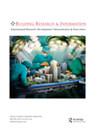商店布局设计与消费者反应:行为与脑电图研究
IF 3.7
3区 工程技术
Q1 CONSTRUCTION & BUILDING TECHNOLOGY
引用次数: 3
摘要
本文采用一种新颖的方法来评估零售商店布局对消费者反应的影响,即在虚拟环境中对主观反馈、行为数据和脑电图(EEG)数据进行三角测量。参与者(n = 45)被分配到三种商店布局条件中的一种。虽然参与者对布局复杂性的主观/有意识评价没有显著差异,但在布局更复杂的商店环境中,他们的产品召回得分降低,视觉/空间处理大脑区域的认知负荷增加。本研究探讨了感知视觉复杂性与感知商店吸引力之间的关系,并考察了愉悦感和加工流畅性如何调解这种关系。结果表明,这些因素之间存在很强的关联,处理流畅性在中介效应中扮演的角色更重要(78%),而快乐(22%)。总的来说,这项研究为影响消费者对商店环境感知的心理因素提供了有价值的见解。研究结果证明了基于EEG/ vr的方法在研究建筑设计过程中人类行为的价值,用于识别自我报告反馈可能模糊的神经机制和反应。这项研究的结果对建筑设计师和零售商有启示意义,表明简单的商店布局可能在产品召回和减少认知工作量方面更有效。本文章由计算机程序翻译,如有差异,请以英文原文为准。
Store layout design and consumer response: a behavioural and EEG study
ABSTRACT A novel approach was used to evaluate the impact of retail store layouts on consumer responses, by triangulating subjective feedback, behavioural data and electroencephalogram (EEG) data in the context of a virtual environment. Participants (n = 45) were assigned to one of three store layout conditions. While there were no significant differences in participants subjective/conscious evaluations of the layout complexity, they demonstrated reduced product-recall scores, and greater cognitive workload in visual/spatial-processing brain regions, in store environments with more complex layouts. This study explores the correlation between perceived visual complexity and perceived store attractiveness and examines how pleasure and processing fluency mediate this relationship. The results demonstrate a strong association between these factors, with processing fluency playing a more significant role in mediating the effect (78%) compared to pleasure (22%). Overall, this study provides valuable insights into the psychological factors that influence consumer perceptions of store environments. The findings demonstrate the value of an EEG/VR-based approach in studying human behaviour during the building design process for identifying neural mechanisms and responses that self-reported feedback may obscure. The result of this study has implications for building designers and retailers, suggesting that simpler store layouts might be more effective in terms of product recall and reduced cognitive workload.
求助全文
通过发布文献求助,成功后即可免费获取论文全文。
去求助
来源期刊

Building Research and Information
工程技术-结构与建筑技术
CiteScore
8.60
自引率
7.70%
发文量
43
审稿时长
>12 weeks
期刊介绍:
BUILDING RESEARCH & INFORMATION (BRI) is a leading international refereed journal focussed on buildings and their supporting systems. Unique to BRI is a focus on a holistic, transdisciplinary approach to buildings and the complexity of issues involving the built environment with other systems over the course of their life: planning, briefing, design, construction, occupation and use, property exchange and evaluation, maintenance, alteration and end of life. Published articles provide conceptual and evidence-based approaches which reflect the complexity and linkages between cultural, environmental, economic, social, organisational, quality of life, health, well-being, design and engineering of the built environment.
 求助内容:
求助内容: 应助结果提醒方式:
应助结果提醒方式:


